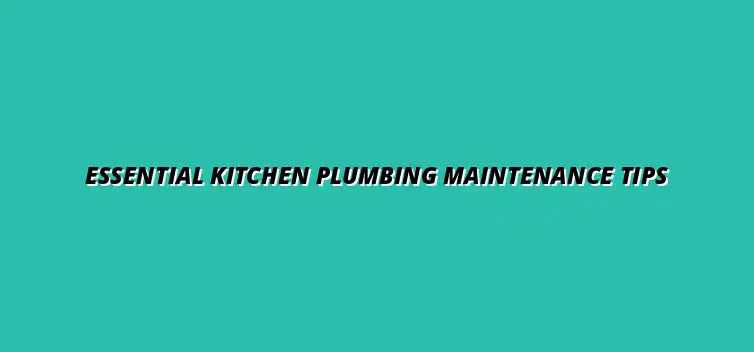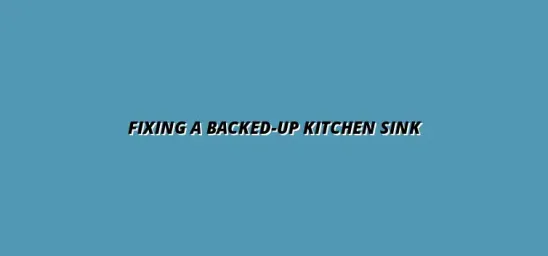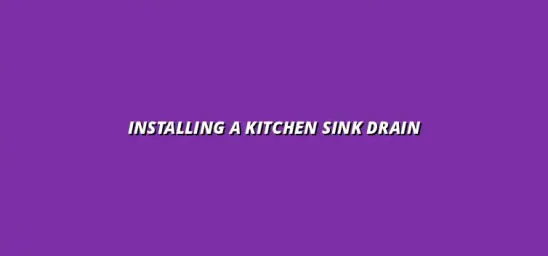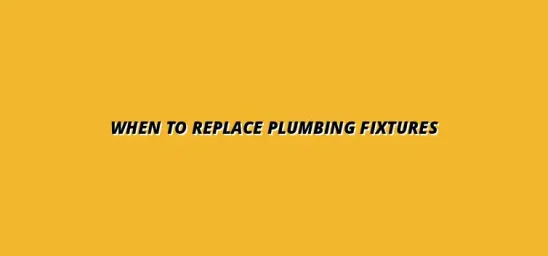
Essential Kitchen Plumbing Maintenance Tips
Understanding Kitchen Plumbing and Its Importance for Homeowners
Kitchen plumbing is a crucial element of any home, serving not only to provide water and drainage but also to enhance our daily convenience. As homeowners, understanding our kitchen plumbing systems helps us maintain them effectively and avoid costly repairs. A well-functioning plumbing system not only aids in everyday tasks but also contributes to the overall value of our home.
From washing dishes to cooking meals, we rely heavily on our kitchen plumbing without even thinking about it. This is why it is essential to comprehend the role it plays and the importance it holds in our daily lives. By doing so, we can ensure that our kitchen remains a functional and comfortable space for our families. For help with more complex issues, consider contacting a local plumber in Great Barr, Birmingham or a similar service in your area.
The Role of Kitchen Plumbing in Daily Life
The kitchen is often the heart of the home, and plumbing plays a vital role in its functionality. It allows for quick access to fresh water and efficient waste removal, making everyday tasks much more manageable. Without proper plumbing, simple activities like cooking, cleaning, and entertaining could become challenging!
- Water Supply: Provides clean water for drinking, cooking, and cleaning.
- Drainage: Removes waste and dirty water efficiently.
- Appliance Connection: Connects dishwashers, refrigerators, and more for seamless operation.
In essence, kitchen plumbing systems are designed to work together seamlessly. When they function properly, they help maintain a tidy and efficient kitchen environment, allowing us to focus on what really matters—enjoying our time with family and friends.
How Kitchen Plumbing Systems Function
Kitchen plumbing systems consist of various components that work together to ensure a steady flow of water and proper drainage. The system begins with the incoming water supply, which connects to faucets and appliances. Once used, the water is drained through pipes that lead to the home's sewage system. Regular maintenance, as outlined in this article and on sites like this one offering essential plumbing maintenance tips for homes, is key to preventing problems.
Understanding how these components interact is crucial for identifying issues before they escalate. Each part, from pipes to faucets, plays a role in the overall system. A leak in one area can lead to problems in another, underscoring the need for regular maintenance.
Common Components of Kitchen Plumbing
Familiarizing yourself with the common components of kitchen plumbing can help you better maintain your system. Here are some key parts to know:
- Pipes: Carry water throughout the kitchen.
- Faucets: Control the flow of water for sinks.
- Drainage Systems: Remove wastewater from sinks and appliances.
- Appliances: Like dishwashers that require specific plumbing connections.
By understanding these components, you can better troubleshoot issues when they arise. Regular inspections can help you catch problems early, ensuring that your kitchen remains a functional and pleasant space. If you encounter a clogged kitchen sink, for example, you can find helpful guidance on fixing a clogged kitchen sink.
The Consequences of Neglecting Kitchen Plumbing Maintenance
While it might be tempting to overlook plumbing maintenance, neglecting it can lead to serious consequences. Small leaks or clogs can grow into bigger issues over time, costing more to repair. It’s important to stay vigilant and proactive about your plumbing to prevent larger problems from developing!
Furthermore, a poorly maintained plumbing system can lead to water damage, mold growth, and unpleasant odors. To keep your kitchen in tip-top shape, it’s crucial to understand the risks associated with neglecting maintenance. Learning how to unclog your bathroom drain easily can be a good first step in preventing larger issues.
Identifying Potential Plumbing Issues
Being able to identify potential plumbing issues early can save homeowners time and money. Here are some signs to watch out for:
- Leaks: Check for water spots under sinks and behind appliances.
- Slow Drains: This can indicate clogs in the pipes.
- Strange Noises: Sounds like gurgling or banging may signal a problem.
By keeping an eye out for these signs, you can act quickly to address issues before they escalate into major repairs. Regular checks can make a significant difference in maintaining a healthy plumbing system. For example, learning how to repair a leaky kitchen sink can save you money and time.
Impact of Poor Maintenance on Home Value
Neglecting kitchen plumbing not only affects daily life but can also have a negative impact on your home's value. When potential buyers see issues like water damage, leaks, or malfunctioning appliances, they may be deterred from making an offer. Proper maintenance is essential for preserving both your home’s functionality and its market value. Regular maintenance, as described in these plumbing maintenance tips for homeowners, is crucial.
Investing time and money in plumbing upkeep can yield significant returns when it’s time to sell. A well-maintained kitchen conveys a sense of care and can lead to a more attractive, higher-value property.
Best Practices for Sustained Kitchen Plumbing Care
Maintaining your kitchen plumbing doesn't have to be a daunting task. By following some best practices, homeowners can ensure their plumbing systems remain in great shape for years to come. Establishing a regular maintenance schedule is key, as it allows you to catch potential issues before they become major problems!
A well-planned maintenance routine helps you stay ahead of necessary repairs and can save you money in the long run. In this section, I'll share practical tips on how to keep your kitchen plumbing running smoothly. Don't forget the importance of water heater maintenance; check out tips on maintaining your water heater efficiently.
Establishing a Regular Maintenance Schedule
To keep your kitchen plumbing in check, consider setting a maintenance schedule that works for you. This routine will help you stay organized and proactive in addressing plumbing needs. Here are some steps to get started:
- Choose a specific day each month for plumbing checks.
- Include seasonal inspections to prepare for extreme weather changes.
- Make adjustments based on your kitchen usage and any previous plumbing issues.
Creating a Checklist for Kitchen Plumbing Maintenance
A checklist is a helpful tool for ensuring you don’t forget essential maintenance tasks. Here’s a simple checklist you can follow:
- Check for leaks under the sink and around faucets.
- Inspect sinks and drains for clogs or slow drainage.
- Test all faucets and appliance connections for proper operation.
- Look for signs of rust or corrosion in pipes.
Using a checklist makes it easy to track what has been done and what still needs attention. Plus, it gives you peace of mind knowing that your plumbing is regularly cared for!
Setting Reminders for Seasonal Inspections
Seasonal inspections are crucial for maintaining your plumbing system. You might want to set reminders on your phone or calendar to ensure you don’t miss these important checks. Here are tasks to consider for each season:
- Winter: Insulate exposed pipes to prevent freezing.
- Spring: Check for any leaks that may have developed during colder months.
- Summer: Inspect hoses and connections for outdoor appliances.
- Fall: Clear debris from gutters and downspouts to prevent water damage.
By scheduling these inspections, you'll help maintain a healthy plumbing system year-round!
Investing in Quality Plumbing Fixtures
Choosing high-quality plumbing fixtures is a smart investment for any homeowner. Durable and efficient fixtures will not only enhance your kitchen's functionality but can also save you money on water bills. When considering upgrades, here are some options to keep in mind:
- Look for water-efficient faucets that reduce water usage.
- Choose fixtures made from durable materials, such as stainless steel or solid brass.
- Consider purchasing models with warranties to protect your investment.
Choosing Durable and Efficient Kitchen Faucets
When selecting a kitchen faucet, think about both style and functionality. A good faucet should not only match your kitchen decor but also offer efficiency. Here are some features to look for:
- Single-lever operation for easy flow control.
- Pull-down or pull-out sprayers for added convenience.
- Easy-to-clean finishes to minimize maintenance.
Investing in these features helps ensure your faucet lasts longer and operates efficiently!
Benefits of High-Quality Pipes and Connections
Don’t overlook the importance of quality pipes and connections in your plumbing system. The right materials can help prevent leaks and corrosion. Here are some benefits of investing in high-quality plumbing:
- Improved water flow and pressure.
- Reduced risk of leaks and water damage.
- Longer lifespan for your plumbing system.
With quality pipes, you’ll enjoy peace of mind knowing your plumbing is built to last!
Final Thoughts on Kitchen Plumbing Maintenance for Homeowners
Taking care of your kitchen plumbing doesn’t need to be overwhelming. By implementing a few best practices, you can keep your plumbing systems running smoothly for years to come. Remember, knowledge is power, and being informed about plumbing maintenance will empower you to handle any situation!
In this section, I’ll share more tips and resources to help you build your plumbing knowledge base.
Building a Knowledge Base for Future Plumbing Needs
Understanding your kitchen plumbing system is beneficial for every homeowner. Knowing how things work aids in identifying problems early and making informed decisions about repairs. Here are some resources you can explore to expand your plumbing knowledge:
- Online tutorials and videos on kitchen plumbing maintenance.
- Books focused on home improvement and plumbing systems.
- Workshops offered by local hardware stores or community centers.
Resources for Ongoing Learning About Plumbing Care
There are countless resources available to help you learn about plumbing care. Consider subscribing to home improvement blogs or YouTube channels that provide practical plumbing tips. Additionally, many local libraries have books and manuals on plumbing maintenance that can be valuable references.
Staying informed about plumbing systems will enable you to address issues proactively and enhance your home’s value!
Connecting with Local Plumbing Experts for Advice
Don’t hesitate to reach out to local plumbing professionals for advice. They can provide insights tailored to your specific plumbing system and local water conditions. Here are some ways to connect with experts:
- Ask for recommendations from friends or neighbors.
- Search online for reputable local plumbers.
- Check reviews and ratings to find trustworthy professionals.
Having a reliable plumber on speed dial can save you time and stress when urgent plumbing issues arise!
Encouraging Proactive Home Maintenance
Encouraging a culture of proactive maintenance within your household can make a big difference in the longevity of your kitchen plumbing. Teaching family members about basic plumbing care will help everyone contribute to a well-maintained home. Here’s why it’s so important:
- It prevents small issues from escalating into costly repairs.
- It fosters a sense of responsibility among family members.
- It creates a safer and more efficient living environment.
Why Regular Maintenance Saves Money in the Long Run
Regular maintenance is an investment that pays off! By addressing minor issues promptly, you’ll avoid costly repairs down the line. Plus, a well-maintained plumbing system tends to operate more efficiently, which can lead to lower utility bills.
This proactive approach not only preserves your home’s value but also provides peace of mind knowing you’ve taken steps to protect your investment!
Fostering a Culture of Home Care Among Family Members
Getting everyone involved in home care can make maintenance tasks feel less overwhelming. Create a shared responsibility plan where each family member takes on specific plumbing tasks. This could include:
- Checking for leaks.
- Cleaning out sink drains.
- Monitoring water bills for any unusual spikes.
By working together, you’ll foster a culture of care that benefits your home and teaches valuable skills!





Fixing a Backed-Up Kitchen Sink
Prepare Your Plumbing for Weather
Installing a Kitchen Sink Drain
When to Replace Plumbing Fixtures
Fixing a Jammed Garbage Disposal